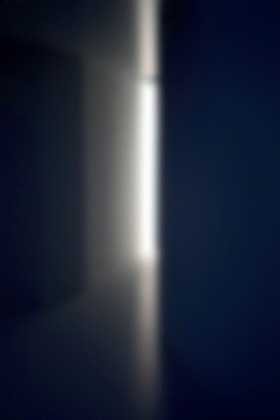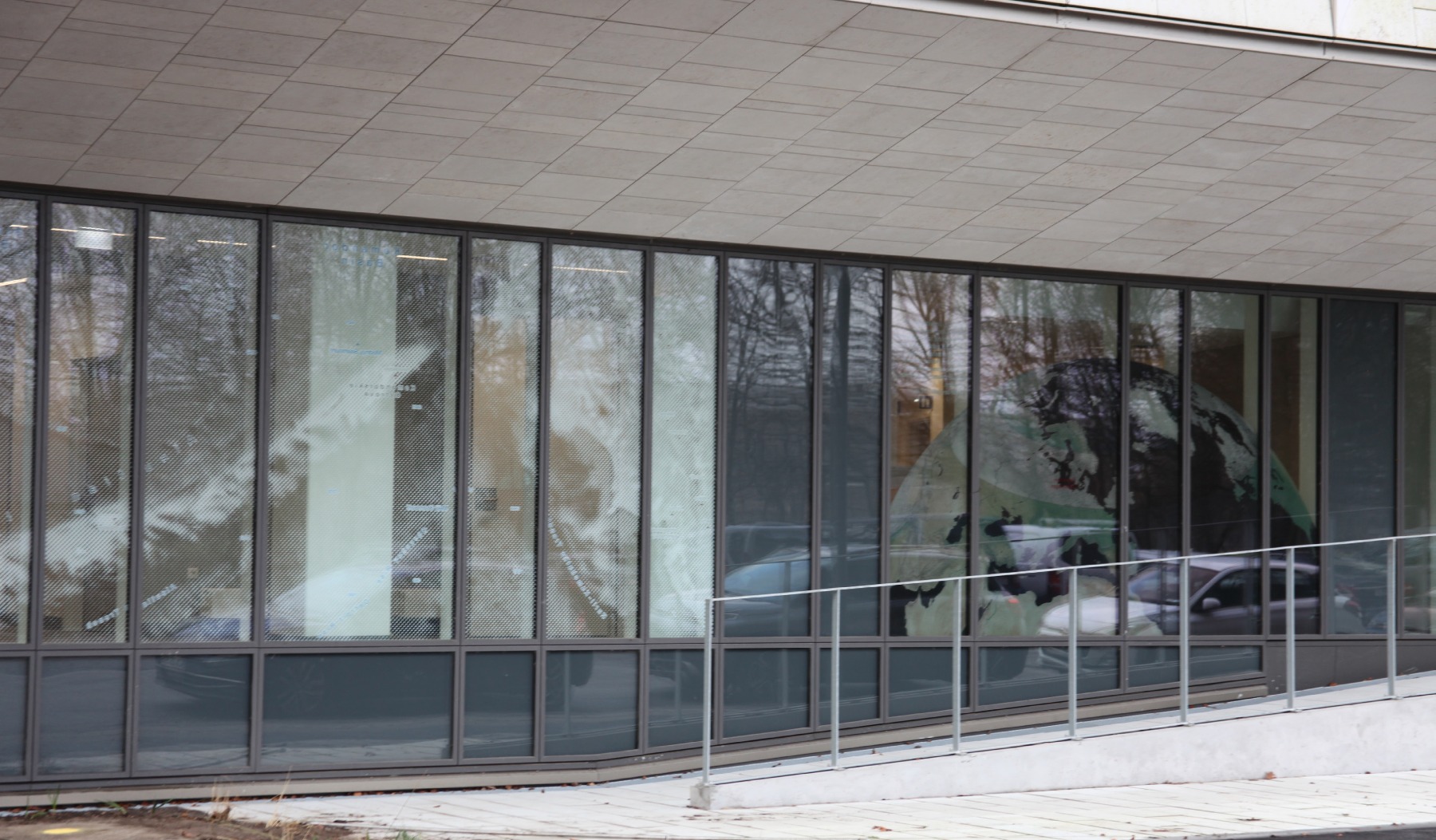
Other ways of perceiving space
A conversation with Austrian artist Eva Schlegel
Eva Schlegel is an Austrian conceptual artist who works across various mediums, including photography, painting, installations, sculptures, and site-specific interventions. Her work often explores themes of materiality and the ephemeral, examining how the interaction of these elements influences the audience’s perception of space. She challenges our notion of physicality and the limits of viewing, provoking us to question our own perception and orientation, both in human and cosmic time. Her work embodies the conception of abstract beauty, which exists here and now but often goes unnoticed
Eva Schlegel’s work has been presented in numerous solo and group exhibitions worldwide. She represented Austria at the Venice Biennale in 1995 and served as the Commissioner for the Austrian Pavilion at the 54th Venice Biennale. From 1997 to 2006, she taught as a university professor at the Academy of Fine Arts Vienna.
Eva Schlegel’s large-scale sculpture, “Untitled (mirror labyrinth)”, will be presented at this year’s Art Basel Unlimited (June 10–16) in collaboration with galleries Krinzinger, Wendi Norris and Bo Bjerggaard.
Eva Schlegel, Exhibition views: liminal spaces, Galerie Krinzinger, Vienna, 2022
Photos: Anna Donadel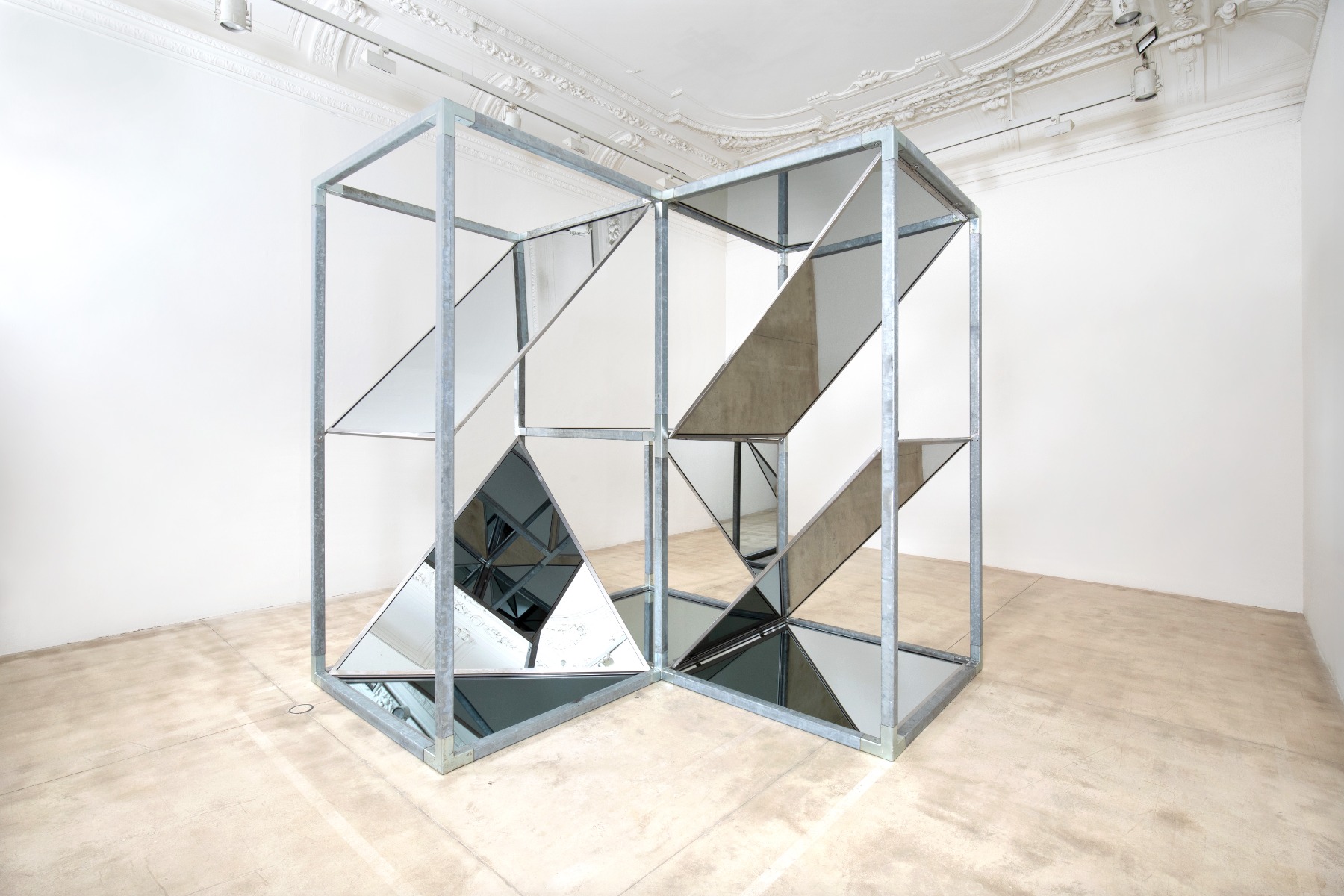
Could you tell me in a few words about the installation you’re creating for Art Basel?
I’m creating a sculpture. It is very tall, measuring three by three meters; it’s larger than life-size. When you approach it, it’s like a fraction of broken mirror sculptures. It consists of different mirror elements set at various angles. But the sculpture does not reflect the people approaching it rather creates a very special kind of space. This is what my work is generally about: other ways of perceiving space. This sculpture is actually one element of a labyrinth I created for a large show at the Gallery and before that at Kunsthalle OK in Linz, where I had 200 square meters of mirror sculptures, like a walkable Labyrinth, created of mirrors which did not reflect and show the viewer. All the pieces were the same size but at different heights. This was very special for the viewer because, normally, if you for example, go window shopping, you see yourself and check your reflection. I think what actually happens is that you are assuring your own existence. Am I here? Am I there? Am I depicted? Am I alive? Am I real? Something like that. This automatism I wanted to undermine and show something different. You cannot find yourself or see yourself, but you see very strange reflections of space, endless fragments of space. You see movements of other people walking and fragments of them moving by. (There is a beautiful piece by Arvo Pärt from the 70s: ‘Spiegel im Spiegel’. I was excited to find it, and we played it at the opening in Gallery Krinzinger in Vienna. It also thematizes the endless space created by this reflection.)
Eva Schlegel, Exhibition views: liminal spaces, Galerie Krinzinger, Vienna, 2022
Photos: Anna Donadel
Like expanding the borders of our notion of existence.
Yes, in a way, it’s about that. There’s another piece that involves a mirror set at a 60-degree angle sitting in the green grass. It’s a huge, round mirror, two meters fifty in diameter. When you look into the green, suddenly there is a hole, you see a portal to the sky. You see only the sky and the clouds passing by. So yes, it’s about interchanging realities in a way.
Eva Schlegel, Untitled (mirror labyrinth), exhibition view, Galerie Krinzinger, Vienna, 2022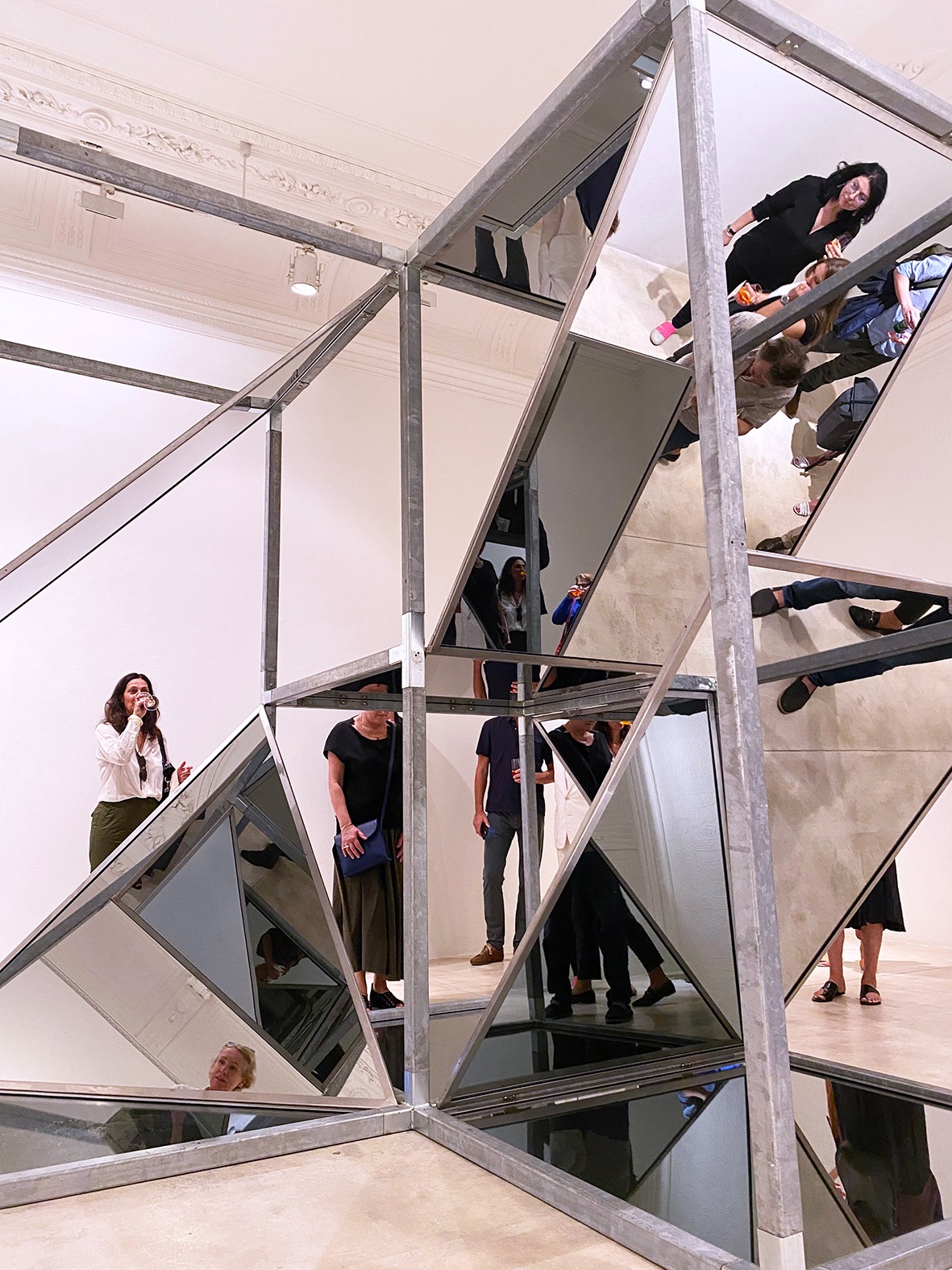
What does the mirror mean to you, both physically and metaphysically? You’ve been working with mirrors for many years now.
For me, the mirror is a way of seeing into a different space. This is quite complex as I use mirrors in various ways. In autumn, I opened a huge sculpture in Oklahoma (Eva Schlegel: Multiple Voices), right in front of the contemporary art museum. It was like a row of horizontal mirrors reflecting themselves, creating the illusion of endless columns of nothingness. I combined this with blurred texts from indigenous writers on vertical glass panels throughout the sculpture. The blurry text seems to float in the air... Many indigenous people were forcefully relocated to Oklahoma in 1836 (trail of tears), – now there is a vibrant community of different indigenous tribes. The poet Laureate Joy Harjo has collected contemporary writing by indigenous women. I integrated these poems and texts into the sculpture, creating a blend that reflects a unique transcendence. They have a totally different way of seeing space, which intensifies the mirrors, reflecting themselves endlessly.
At the same time, you can walk on the sculpture, enter these endless columns, sit on the sculpture, and lean back to look into eternity in a way. I must say, I am not a religious person myself, but for me, this other space has to do with the here and now and also something beyond, though not in a religious sense.
Eva Schlegel, multiple voices, Oklahoma Contemporary Arts Center, 2023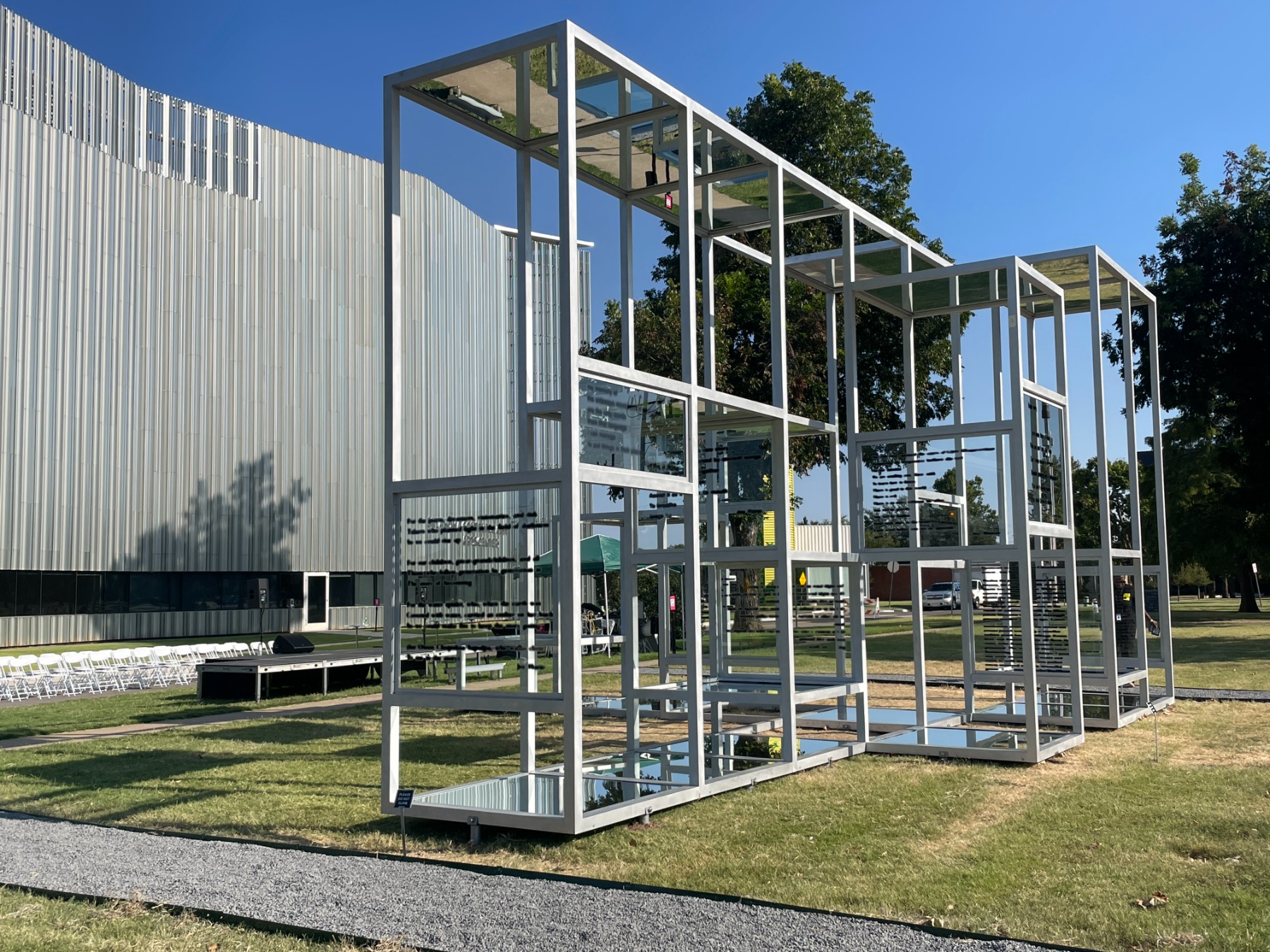
Mirrors also serve as a reflection of our transient existence, capturing a moment in time while also reminding us of our mortality. When we gaze into a mirror, we see ourselves in the present, but we are also confronted with the reality that this image will change over time. It’s a profound experience that invites contemplation of the self and our place in the world. Do you find yourself reflecting on these existential themes often?
Yes, especially in that sculpture I just explained, where we have the poems of indigenous people. It’s a space beyond our normal environment, but at the same time, we recognize ourselves. It’s like the state a child reaches between sixth and eighteenth month recognizing itself for the first time in the mirror. (development of the self) As babies, they see movement but don’t connect it to the own person. Then, at a certain stage, they see it’s “me.” So, I think mirrors have to do with self-recognition, space, and transcendence.
Eva Schlegel, Exhibition views: liminal spaces, Galerie Krinzinger, Vienna, 2022
Photos: Anna Donadel
Also, you work a lot with light and space, this combination. I think our understanding of light and space is limited as well because we only know what we have experienced.
Yes, that’s really true. for the last exhibition at Galerie Krinzinger I experimented with perceiving space through the camera, I visited a lot of different art museums and did some portraits of spaces. I tried to create enigmatic images of spaces that you couldn’t immediately recognize or understand how they worked. Then I took it a step further, and we made models, creating spaces with light and different walls: black walls, white walls, where you do not know how the space works. You see the space, you see the light, but you don’t exactly understand how it functions. This is called liminal space. Liminal space is an in-between space. The term comes from social science and refers to a transitional space, such as one you move through when you die or experience a significant change. It is also an important concept in the gaming scene, where they create spaces that do not exist in reality but where you can play.
For me, space is something that is not fixed, something I want to create. The most interesting thing for me has always been the immaterial space, which you can perceive in some way. You do not know how it works, but you can see it.
But do you perceive it more sensually or more intellectually, or it is combination of both?
This is a good question. The concept is intellectual because it’s something I want to find or create. It’s a goal. But it also has to do with a sensual experience.
Eva Schlegel, multiple voices, Oklahoma Contemporary Arts Center, 2023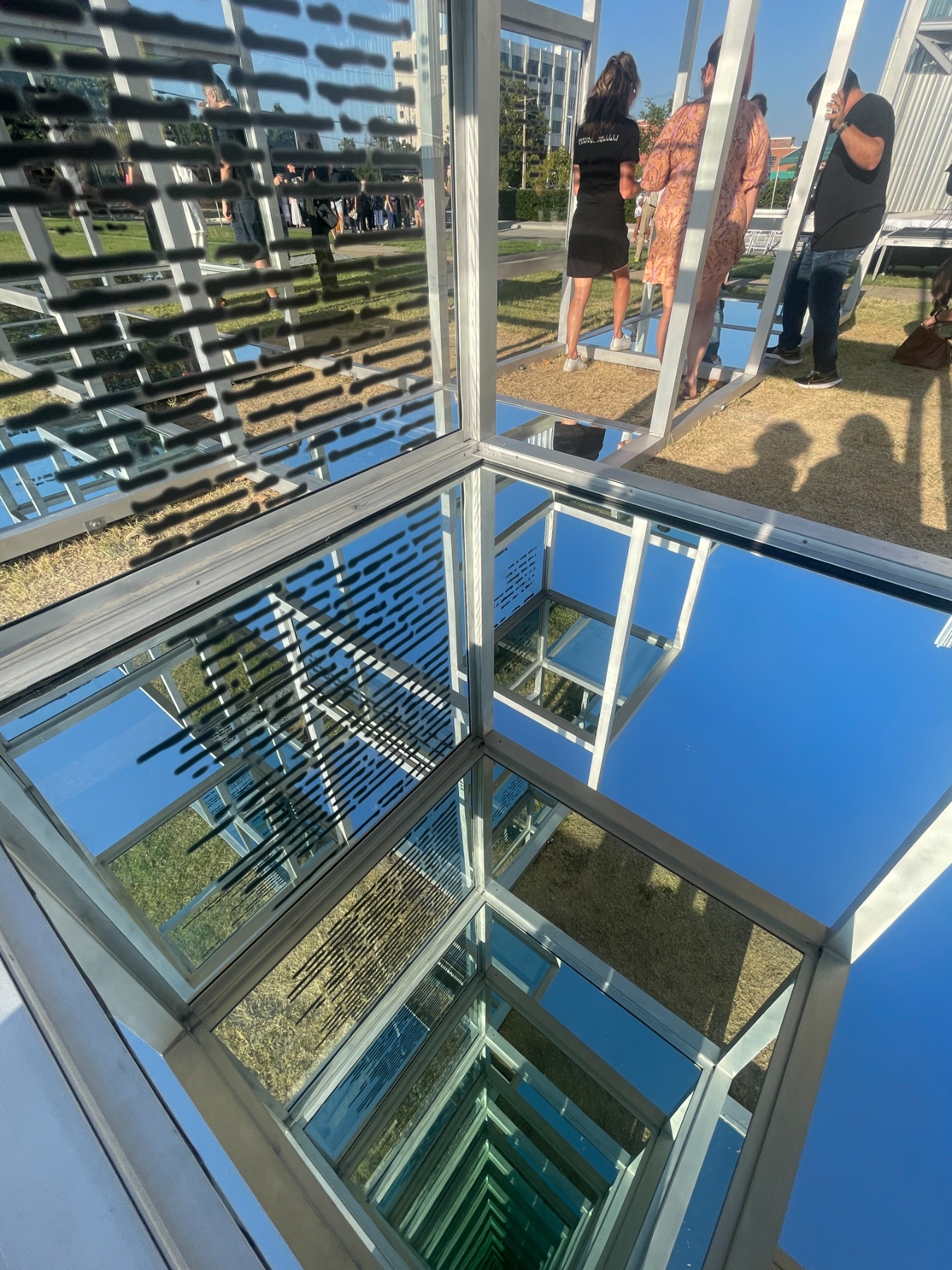
Also, it’s very interesting how you work with text; it’s blurred. In some way, this continues the notion of space because it leads us somewhere completely different. By blurring the text, you add another layer that is not direct, altering its initial meaning.
Yeah, that’s true. For example, I used it in the sculpture multiple voices in Oklahoma in front of the Oklahoma Contemporary Art Museum. On the other side is the main road of Oklahoma City, so it’s in between. The text on it is blurred. When you drive by in a car, you see the text, but you cannot read anything. I thought maybe people would stop, go there, and look. Again, they cannot read it when they come closer, but they see that there is something different. They find a leaflet right at the sculpture which contains all the poems and texts in readable form.
It worked out like intended, one day a group of bicycle riders stopped and wanted to see what was going on. They went to the sculpture, sat on it, walked into it, and read the leaflet. I loved the photos the Museum sent me about that.
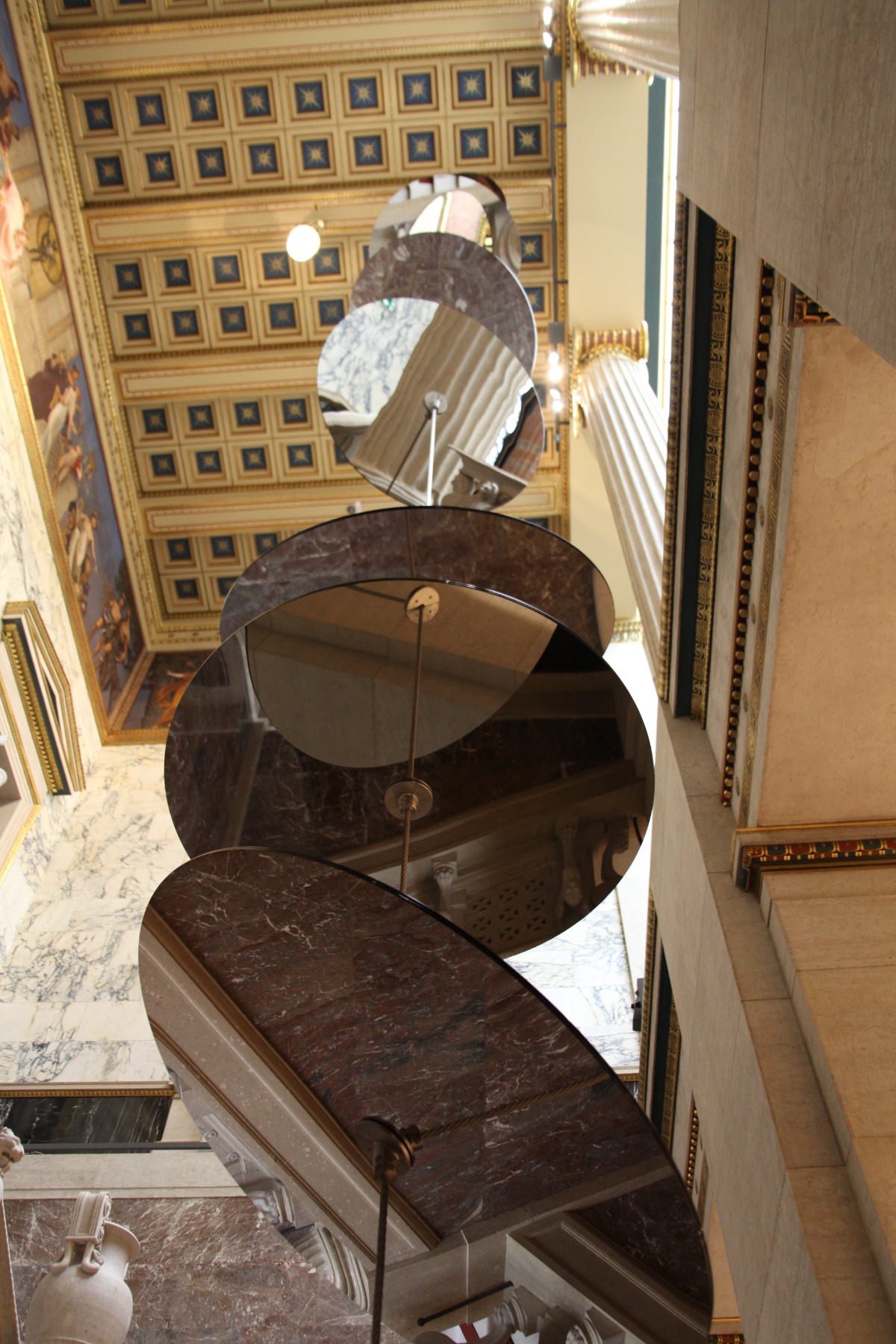
With your work, you try to involve all the senses, including touch. Nowadays, in this fragmented world, our senses are not as sharp as they once were. Somehow, with art, you are sharpening them again. Do you have that feeling yourself?
Yes, of course, I consider that. This was the main starting point when I blurred the text. I thought, do I see this as an image, or do I see this as text? And it always remains text. Everyone who can write and read immediately knows that it is text, and it has a certain direction. Even if you flip it, you see it’s wrong. There’s a lot we learn while writing and developing words and sentences.

Regarding the mirror, I totally agree; this is a very important point. I was invited to do an installation at the main staircase of the newly restored Austrian Parliament building. It is a double staircase from the nineteenth century, very beautiful, with figures, statues, and paintings. It’s 17 meters high on both sides, and I developed a steel rope in each eye of the staircase with huge round mirrors fixed at different angles. When you walk up one side, of the stairs you can look to the other side through the mirrors. it’s just a very small interaction, but it does a lot. The whole space turns around you while you going up or down. You immediately realize it. People try to find a position where they mirror themselves and take photos in the high column of mirrors, which looks like huge coins falling down or something similar. This space makes you interact immediately; you just react directly.
You have your work in a hospital in Copenhagen. Several years have passed since it was installed. How is it living in that environment, and how is it interacting with the patients there?
Rigshospitalet Copenhagen has asked me to create a piece of art on the facade for patients with facial cancer. These patients have a high suicidal rate. Since the facade is at street level, I had to protect them from being seen, as the waiting rooms were just behind the glass. On the other hand, they asked me not to cut them off from the world. So in this proposed work, I followed the latitude of Copenhagen, all around the world.
When you enter the walkway and walk along, you are essentially walking around the world at the latitude of Copenhagen, passing through Poland, Canada, Germany, Great Britain, and so on. I included the names of cities, which could only be read from the inside. My intention was to distract the patients to forget about their disease, even if just for a short time, and make them curious again. I wanted them to walk up to the glass facade and think, “Look, there’s London – next year, when I’m healthy, I’ll go to London,” or “There’s my friend living in Malmö.” This was the intention, and they really do love it.
There is a lot of research going on about the healing potential of art nowadays. There are special programs in museums, and some hospitals have art collections as well. What is it in art that can help people heal their psyche and recover from physical problems as well?
I think art has a very high impact on people. But I believe it depends on whether you perceive art as something necessary for your existence. Once, I had a very bad accident, broke my jawbone, had an operation, and had to stay in a hospital. The hospital had a collection of art pieces, and my work is part of that collection too. I remember walking around and looking at the art; I felt a very strong interaction. I think art has significant healing qualities. But you have to be ready to receive this; you must love art or life in a way.
There are many drawing courses for traumatized people, and I think this is a very good way of accessing the soul without words. It’s a very subtle and direct way to reach the soul.
Through art, you can express things you can’t express with words sometimes because art is a universal language. You are not limited. And, as we know, humans have used art since the very beginning. There is also a spiritual aspect to it. At its core, great art is spiritual, isn’t it?
I do think so. This quality keeps art alive over centuries and makes it understandable to humans. Spirituality is really important. Even in conceptual or minimal art, there are many things you cannot talk about, but you feel them. If you approach them, you feel so much more, and this is very important.

You’re working with space, and I would like to ask you, what is the space you enter when you are creating? What is it?
This is a space I cannot describe. I started to draw a lot during the pandemic when I was in the studio completely alone, no assistants allowed. I’m still drawing. When I draw, I enter a space where I completely forget myself. I become bodiless, mindless, and timeless. This space is, I think, pure being. You are very focused and very concentrated, but you forget about everything else. This is the space that brought me to art. It’s a space I really like to be in and which I am constantly searching for.
The detachment, you know, whether a drawing is good or not, comes later. You step out and look, thinking, “Oh no, I have to try again,” or something like that. But the act of just being and doing something while forgetting about yourself – this vast space – is wonderful.
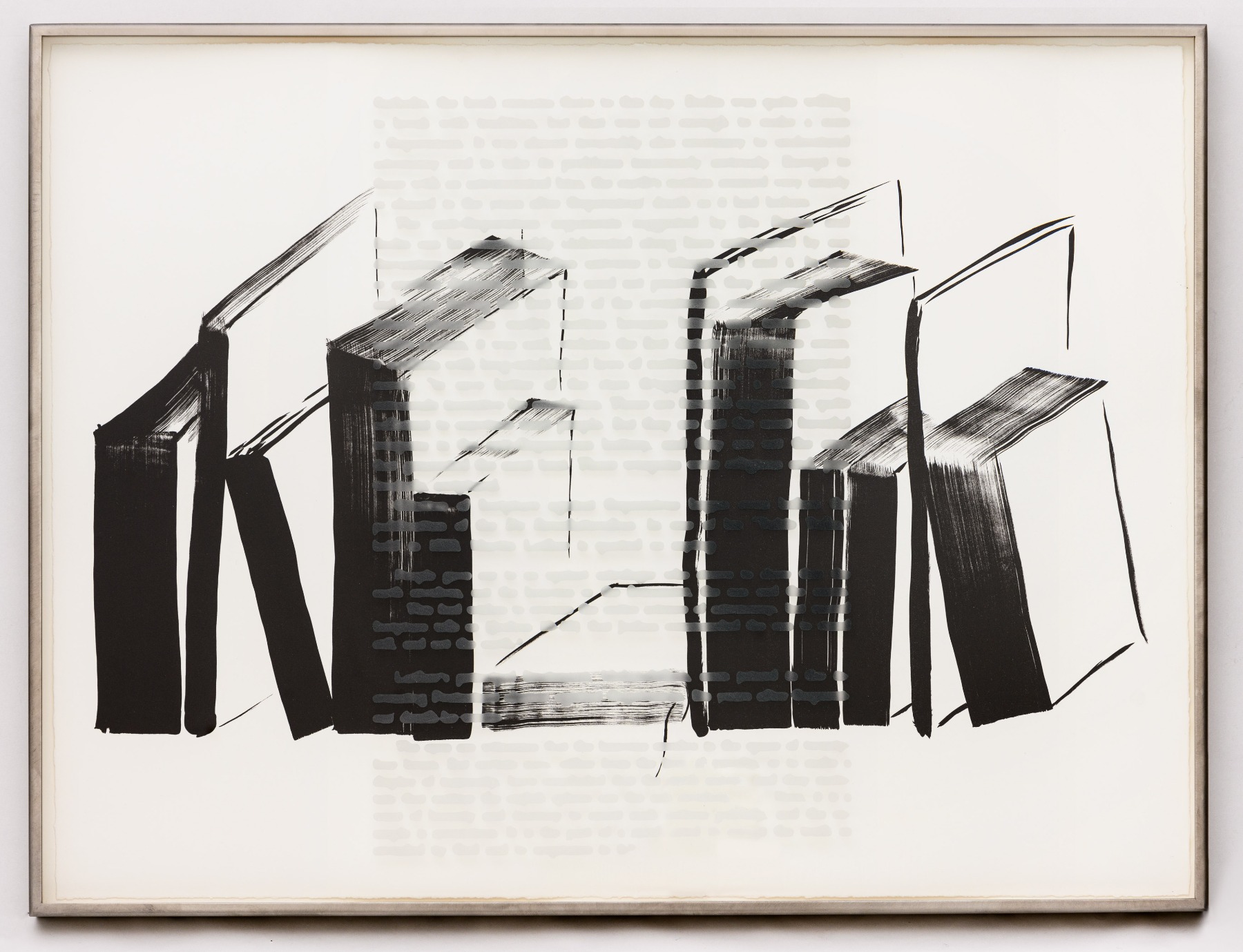
Do you remember the first time you entered that space and decided you always wanted to be connected with it?
I remember, yes. I think I was 12 or 13. I grew up in a big family with three sisters and brothers. My father was traumatized by war, so he was very controlling, our family life always was very turbulent. I would sit in my room, drawing and forgetting about everything. I didn’t perceive my childhood lighthearted, but now after ten years of therapy, thinking back on my childhood is different from how it used to be, which is great. But I remember it was quite tough. When I was sitting in my room, forgetting about everything, I thought, this is it. I want to have this.
The drawings were awful, but it was the moment of being so concentrated, working on one thing, that felt fantastic. This is something I try to communicate. I also think this was the initial thought behind the flying and falling people films I made (In Between, 2011). I remembered having this idea: I’m flying in my head, very excited that there’s no gravity, and I try to reach that. I wanted to tell people, and maybe they have the same feeling. And some of them really do.
I think to survive in this difficult world we need both flying and falling. Because only when you fall do you understand that you can fly out of it. You need the power, of course, and imagination. It is not possible to fly high all the time; you need the equilibrium between the two. Did you have moments when you literally experienced the notion of falling and the need to fly yourself up?
I think that’s very important. And, of course, there’s the other side to failure: that you do not reach your even abstract goal, and you try again, but you fall. This experience happens often in life. The key is to step back, analyze, and try to find a way out. The experience of failing is very important in order to start again. And I have had these experiences, of course. But we cannot generalize.

It’s interesting that you are working with images of women and blurring them, challenging our Western cultural background. As contemporary neuroscience has confirmed, each of us is influenced by what we see and our background.
The idea behind those pieces was absolutely about common experience and how we see idealized women in magazines and everywhere. They’re all slim and beautiful, and this impacts both women and men, and our culture. I wanted to show that even when blurred, even if you only see the shape, it triggers something in your brain. By blurring them to the point where you don’t see the individual face of the woman, she stops being a person and becomes a common cultural fact. I think this still holds true despite various other movements. It’s also a critique of how we perceive these beautifully shaped bodies.
I made them larger than life, over two meters tall, making them bigger than us, which is both special and a little weird.
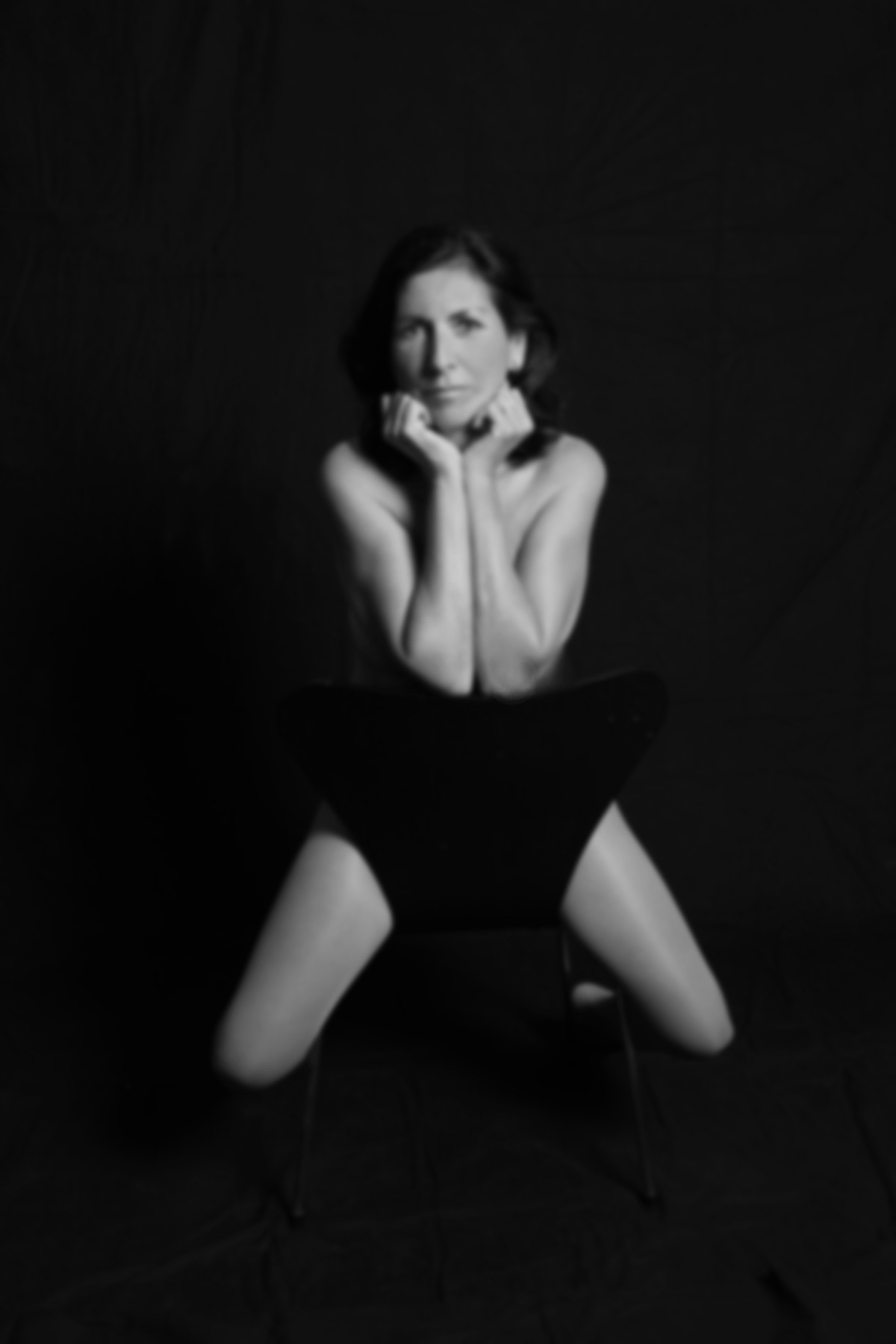
It’s a kind of generational trauma we can’t seem to pass. Nowadays, if you look at group exhibitions, women artists are leading by numbers, and many things are changing. But deep in our consciousness, this trauma still exists. Is it even possible to overcome it, and how?
It’s really hard because of all these social media platforms like Instagram etc. Even the filters on cell phones make you look nice, take away your wrinkles, and make you look better. How should we overcome this trauma of not facing our real selves? How can we, when technology makes us appear more beautiful than we are? There are filters that can stretch you, make you look in good shape, and even industries that promote lip enhancements and other alterations.
Sometimes, even I struggle with this. You feel yourself aging, especially after experiencing personal losses like the passing of my mother, which reminds you of mortality and illness. But I think we shouldn’t forget to be sad and to mourn. This is a very important aspect of society. Without mourning, you will never overcome and accept that you’re not perfect.
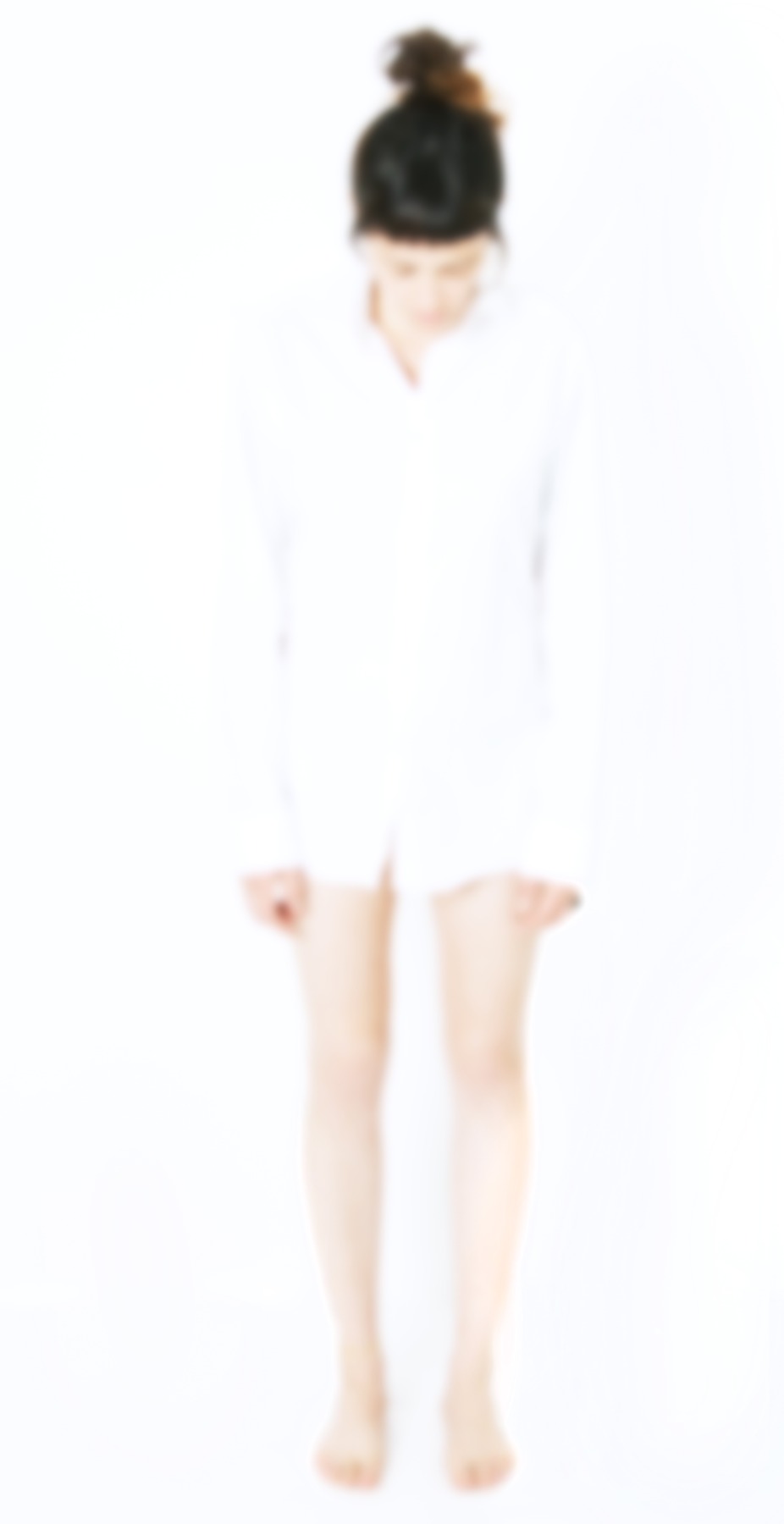
When we look in the mirror, we are always subconsciously looking for a reflection that embodies the best version of ourselves. We have an image in our mind of how we should look, and we are kind of searching for it. Did you notice this as well?
Yes, I realized that often when I’m talking to someone, their image of themselves is totally different from what I perceive. It’s really interesting. And with our gene editing techniques, we are starting to erase failure. But failure in nature was always a way of experimenting for survival. Illness is part of that; it’s not just illness, it’s an experiment of survival. We are now trying to erase Down’s Syndrome, for example. You can detect it very early and terminate the pregnancy.
It’s also interesting that we as humans are very drawn to search for reflections of ourselves. If there is no mirror, and, for example, we are walking by a river or lake, we look for our reflection there. Sometimes we even do this in an ordinary puddle. I suppose when viewers enter your work, it is one of the first things they look for. Why do we have this attachment?
I think the mirror reassures us of our own existence. When Narcissus looks into the lake, he sees himself there, and all around him is also reflected. He is in the environment, so it must be real. In a way, it reassures our perception of the world. It’s something very fundamental, I think. And it is also seductive in a way.
Eva Schlegel, o.T. (mirrors on digger), instalation views, 2019 Photo: Stefan Rigger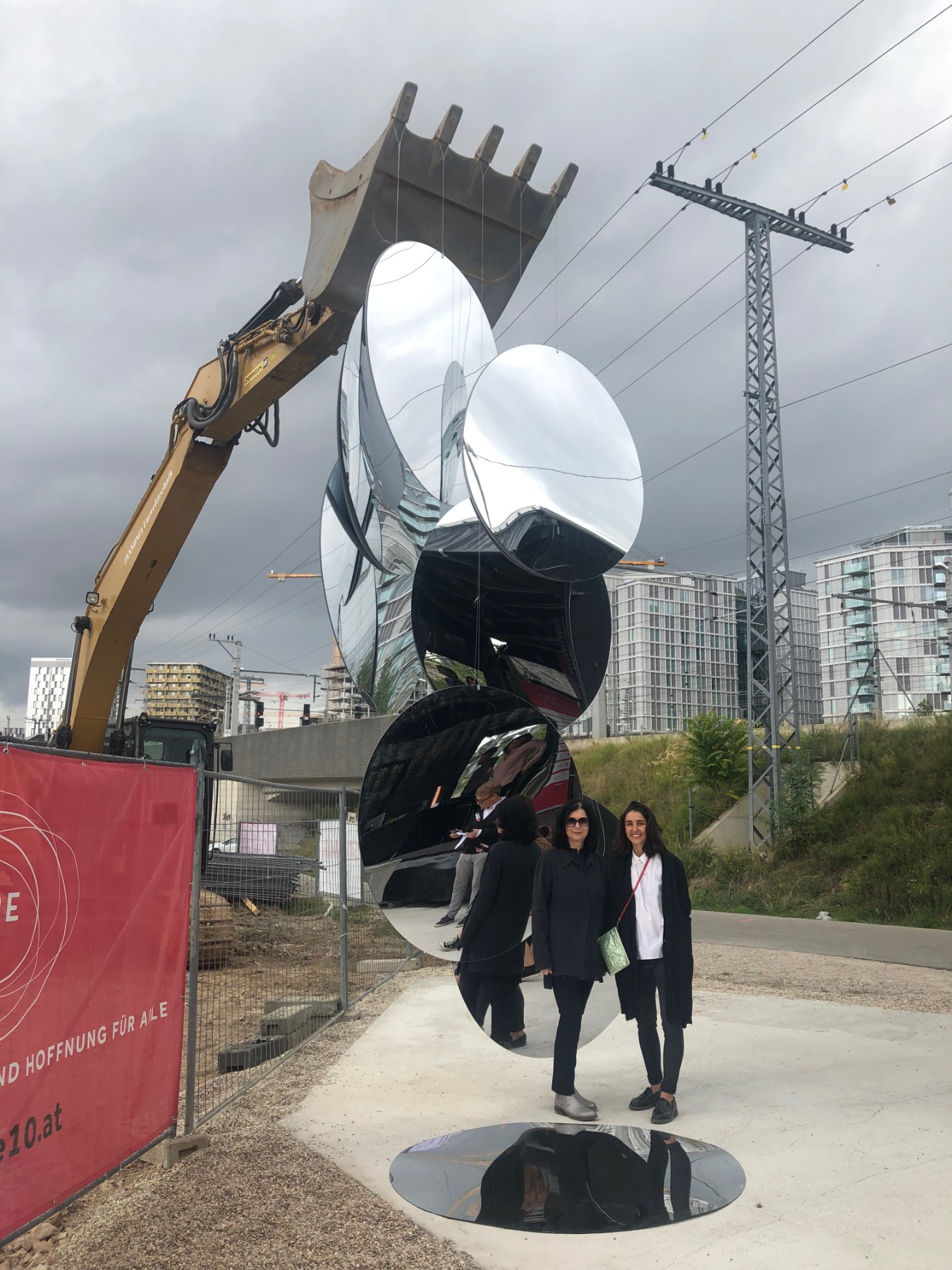
Do you feel there are limitless possibilities to work with mirrors as a medium?
That’s a good question. I don’t know, actually. I’ve been working with mirrors for quite a long time. The first work I did was in an underground garage. I was asked to create a site-specific piece there, and the ceiling was very low. So, I placed many small round mirrors on the ceiling, almost like drawings. This opened up the space, giving everyone the feeling of being connected to the world above. At the same time, there was one mirror above an entrance. When people entered and realized there was a mirror, they would also check their own reflection.
I’ve worked with mirrors in different, very playful ways. Once, I used mirrors on a caterpillar. I hung a lot of mirrors out in the open air, and as the wind blew, it created a very playful sculpture for just one day. Right now, there are still many different ways of using mirrors. I think when I feel there’s no more development, then I will stop working with mirrors. But as long as I find new ways to use them, I will continue. For now, there are still possibilities to explore.
Mirrors can create infinity. With two horizontal mirrors, you can create infinite reflections – reflection upon reflection – so you don’t see an end.
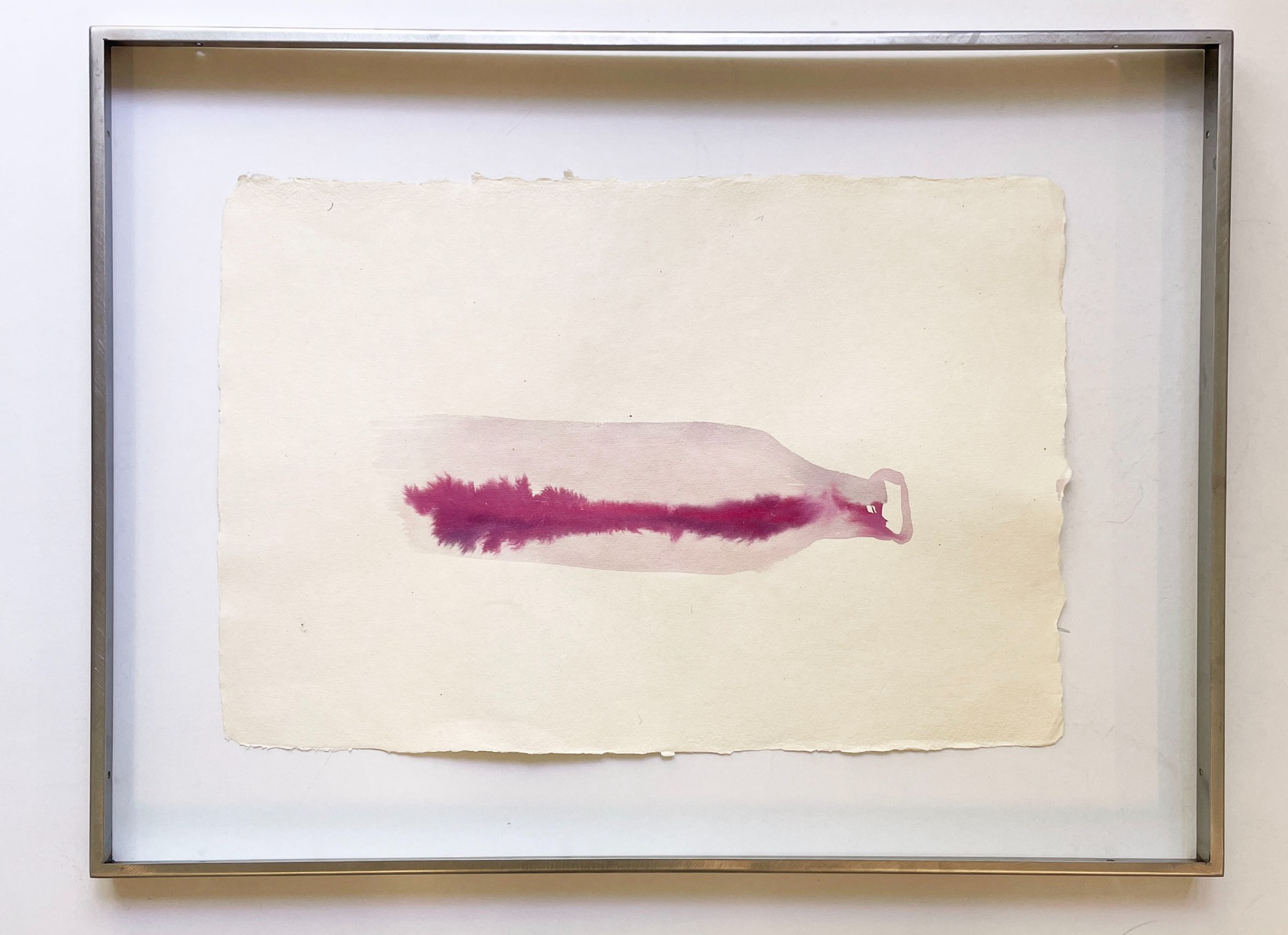
You already mentioned drawing; it is not your main medium, but you always return to it. What is the role of drawing in your development as an artist?
Drawing is a very intimate and direct way of expressing yourself. It was very hard to find a theme – what do I draw? First, I started very abstract. I made circles, like my mirrors. I did calligraphy and then started making books. This was the next step. As I am very dedicated to writing and text, I made books and tried to depict with one brush stroke a book with all the pages. Open books, with many pages represented by just one brush stroke. Then I started with bottles – bottles with wine or something that reminds you of being drunk, losing consciousness, getting into a different state. I suddenly combined these with the books; don’t ask me why, but in a way, I thought, this is something I fear, something I like, etc. So I combined them, and this is what I’m doing now. I do it only for myself in the studio. Sometimes I draw eyes, and sometimes I overlay blurred text, sandblasted onto the glass directly.
I love eyes because they are crucial for me to see the world, to see sharply, to read. Sight is a very important sense for me. So all that comes into the drawings, which I do in the evening, when I am alone, when everyone else is gone.
Speaking about the sense of seeing, to understand art, we should learn how to see. And for that we need time. As an artist who works extensively with reflections and aims to prompt people to see from different angles, what could be your suggestion on how someone could learn to see better or wider?
Well, while you were talking, I was thinking about the significant role of the visual industry, such as films and TV, in shaping our perceptions. They create entire worlds and evoke various emotions, often through visual and auditory cues. It’s challenging because it’s not merely a matter of consciousness. Some people grasp art intuitively, regardless of their level of education. They see something and connect with it effortlessly. This makes it difficult to provide a straightforward answer, as we are all conditioned to see in certain ways. Despite the ubiquity of visual media in our daily lives, many people fail to appreciate art, either because they don’t consider it important or they don’t recognize its value. I believe it’s crucial to discuss art in a broader context.
How can we approach art in a broader sense?
Let it happen. Don’t be judgmental too quickly because most people tend to judge easily and cut themselves off. I think this is the worst thing; you should just observe what you see. It’s okay to contemplate what you know, but just observe what you see and formulate your thoughts. I believe this is important.
Sometimes, when you read too much beforehand, you lose the opportunity for direct experience. You end up constraining it within predefined boundaries.
Absolutely. And that’s especially true when you go into a museum and look at old art. You know, I mostly don’t read the text next to the images, I read just afterwards. First, I look and see what I see and find out what the intention of the artist was. And I think this is really important.
I’ve done a lot of big projects, but right now I’m focusing on portraits. It’s fascinating because you have to observe and get an impression of the other person, you know, how to depict them? Or how to find a setting for this other person? And that’s really interesting. I always think about the person, how they’re structured.
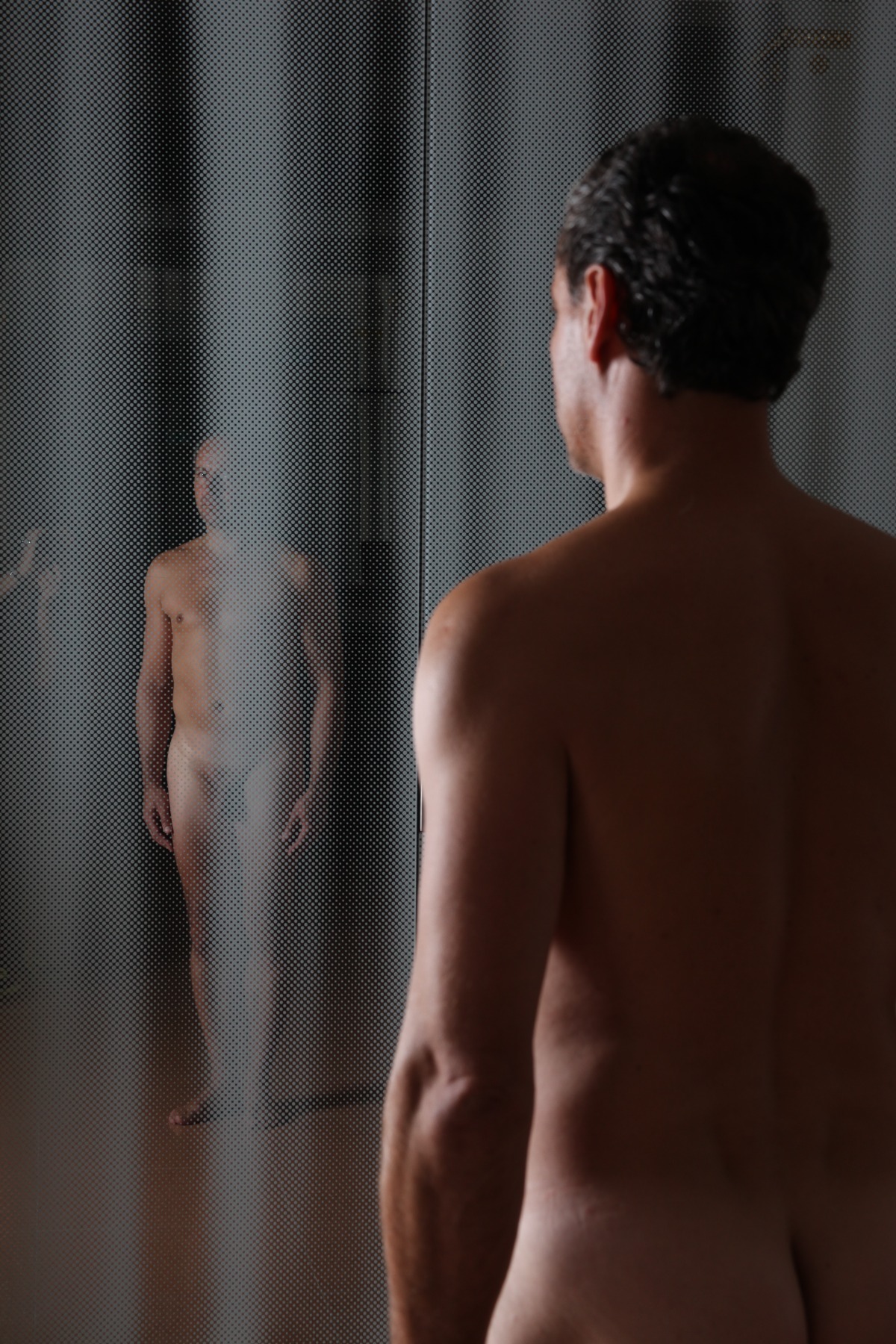
For example, I have a friend who is a developer, whom I’ve been portraying for 25 years now. For the first portrait, I thought that being a developer is a risky business. So I asked him to reenact the jump into the void of Yves Klein. I was sitting below, and he had to jump from seven meters high into a lake, but in a suit. So there was a short time to shoot with the camera. I asked him three times with a different suit each time to jump into the lake. This was the starting point of the flying and falling people – which I filmed later on in Zurich and projected on big rotors, where the film seems to float in the air itself as well as the flying women and men in suits.
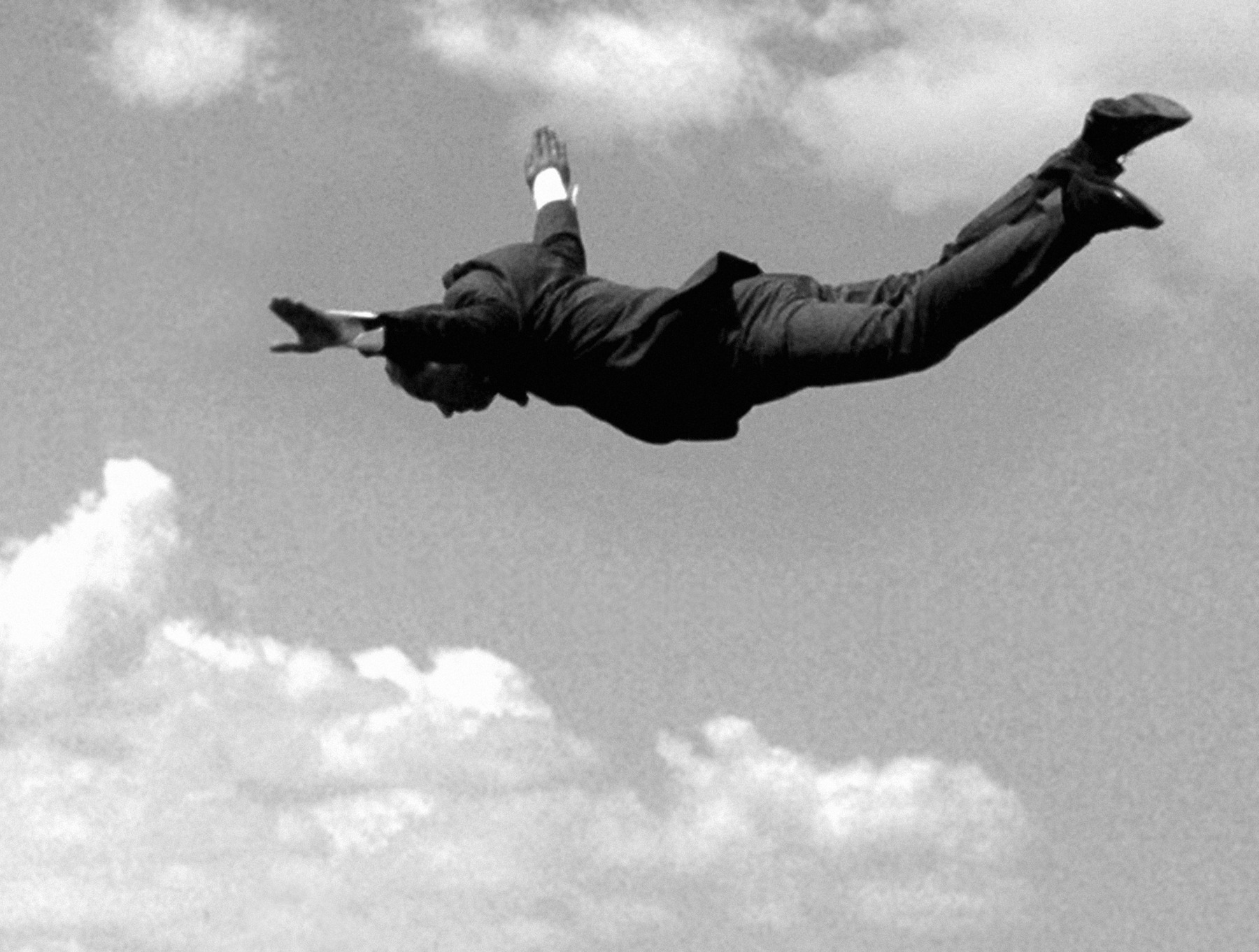
We continued working; I made some really big projects with him. After some years he asked me, “Can we do another portrait?” I said, “Yes.” And he said, “I want to be portrayed naked.” So I said, “Okay, we’ll do a naked portrait.” I did this in the theater, in a space with mirrors and transparent curtains with white dots. So you have this feeling of endless rooms, one room behind the other with the curtains, you know, you see yourself, and so on. So we made a naked portrait. And this was very interesting because I “shot” him from behind in front of this mirror. And this is a really beautiful portrait of a young man, his shoulder very charmingly enlighted, his reflection seen from the front in the mirror shows a totally different person: this was really interesting to have two different portraits of him, showing two sides of him. And now, seven years later, in a difficult situation I thought, okay, okay, this time I’ll make a really proper portrait showing him as a businessman or something. So we’re doing sort of Renaissance Portrait of him, you know, with a dark background and a window aside, where your eye can look out. The window shows the wonderful project he has done, but blurred. And I seat him in front of this background.
Eva Schlegel. Memories.Toplitz. 2024
In 2021, you created a public artwork using augmented reality, featuring sculptures seemingly without gravity. How did you feel working with a virtual medium in an immaterial space?
For me, it’s always about pushing boundaries and exploring new artistic tools. Working with augmented reality was incredibly playful and enriching, and allowed me to experiment in ways that wouldn’t be possible in the physical world. It’s about understanding the concept and creating something that challenges the viewer’s perception, like an ice ball floating in the air or an object that defies gravity entirely, inviting people to explore and interact with it in ways they couldn’t in real life.
Meanwhile, I’m very scared of artificial intelligence, and I’m truly afraid of a time where there are no clear boundaries, where I can’t trust what I see. This is terrifying for me. I’m relieved that the European Union is now enacting laws to distinguish between what is generated and what is real. Even with news being labeled, ensuring there are no fake news or deep fakes, it’s an important step.
Eva Schlegel. Memories.Toplitz. 2024
We are constantly being manipulated already, and there seems to be no end to this manipulation.
Absolutely, and there’s no way out; then you’re totally lost. You cannot judge, and our most valuable thing is that we can think, that we can judge, and then we can decide. And if you’re misguided all the time, there is no possibility of decision anymore. And I think this is really scary. Honestly.
Maybe art somehow reminds us of truth, because true art is something that you feel with your gut instinct.
Yeah, it does. But you have to see it and read it.


